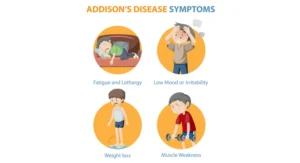Smoking and Its Side Effects: A Comprehensive Guide
By TOI Desk Report
August 6, 2023
Update on : August 6, 2023

Despite widespread awareness of its detrimental effects, smoking remains a prevalent global health concern.
This article delves into the severe consequences of smoking, aiming to educate readers on the long-term health risks associated with this addictive habit.
From respiratory problems to cardiovascular diseases, smoking affects an individual’s well-being and day-to-day life.
It can lead to severe health conditions, relationship problems.
Fortunately, medications, such as Fildena 100 Mg, can help mitigate some of the side effects of smoking.
By understanding the multifaceted impact of smoking, we can make informed choices and work towards a smoke-free future.
Respiratory Health Issues
One of the most apparent and immediate side effects of smoking is its impact on the respiratory system.
Cigarette smoke has thousands of harmful chemicals that irritate the airways and lungs.
Chronic bronchitis, characterized by persistent coughing and excessive mucus production, is common among smokers.
Additionally, smoking weakens the lung’s defense mechanisms, making individuals more susceptible to respiratory infections such as pneumonia and influenza.
Moreover, long-term smoking can lead to the development of life-threatening conditions like emphysema and lung cancer.
Studies suggest that Fildena 100 Mg may enhance pulmonary function and exercise capacity.
Fildena 100 Mg increases blood flow, which helps improve the side effects of smoking.
Cardiovascular Complications
Nicotine present in tobacco increases the risk of developing cardiovascular diseases.
It is a highly addictive substance found in cigarettes that raises blood pressure and accelerates the heart rate, putting a strain on the cardiovascular system.
Fildena 100 Mg acts as a vasodilator, meaning it relaxes and widens blood vessels.
This property of Fildena 100 Mg improves blood flow and reduces the risk of cardiovascular diseases, and also helps men with bedroom problems.
Consequently, smokers are at a higher risk of heart attacks, strokes, and peripheral vascular diseases.
Quitting smoking reduces these risks and improves cardiovascular health.
Increased Cancer Risk
The leading cause of preventable cancer worldwide is smoking.
The toxic chemicals in tobacco smoke, including carcinogens like benzene and formaldehyde, damage DNA and disrupt normal cellular processes.
Lung cancer is the most well-known consequence, accounting for most smoking-related cancer deaths.
But smoking also increases the risk of developing mouth, throat, esophagus, pancreas, bladder, and cervix cancers.
Individuals can significantly reduce their cancer risk and improve overall health outcomes by quitting smoking.
Reproductive Health Implications
Smoking harms reproductive health in both men and women.
In females, smoking decreases fertility and increases the risk of premature birth, miscarriage, and low birth weight.
Babies born to smoking mothers have a high chance of developing Sudden Infant Death Syndrome (SIDS).
In males, smoking impairs sperm quality and affects their bedroom performance.
Fildena 100 Mg can help you with bedroom problems and enhance your confidence and self-esteem.
Quitting smoking is crucial for couples trying to conceive and ensures healthier pregnancies.
Impact on Mental Health
The adverse effects of smoking extend beyond physical health.
Research has shown a correlation between smoking and mental health disorders like anxiety, depression, and increased stress levels.
While it may seem that smoking provides temporary relief, it ultimately exacerbates these conditions, creating a vicious cycle.
Quitting smoking improves physical health and can positively impact mental well-being, leading to a better quality of life.
Efforts to stop smoking
Numerous efforts have been implemented in recent years to encourage individuals to quit smoking and live healthier lives.
These initiatives involve a combination of education, behavioral interventions, and supportive resources.
Nicotine Replacement Therapies (NRTs)
Nicotine replacement therapies have proven to be effective in supporting smoking cessation efforts.
These therapies, available as nicotine patches, gum, inhalers, nasal sprays, and lozenges, help individuals gradually reduce their nicotine dependence.
NRTs provide a controlled and safer alternative to smoking while reducing withdrawal symptoms, making it easier for smokers to quit.
However, it is essential to note that NRTs should be used under healthcare professionals’ guidance to ensure appropriate dosage and duration.
Behavioral therapies
Behavioral therapies are essential to smoking cessation programs, focusing on identifying and modifying the behavioral triggers associated with smoking.
These therapies, including cognitive-behavioral therapy (CBT) and motivational conversation, help individuals develop healthier habits, cope with stress, and manage cravings.
By addressing the psychological aspects of smoking addiction, behavioral therapies contribute significantly to long-term success in quitting smoking.
Workplace and community initiatives
Creating smoke-free environments in workplaces and public spaces can support individuals trying to quit smoking.
Smoke-free policies protect non-smokers from secondhand smoke and encourage smokers to make healthier choices.
Employers can offer smoking cessation programs, support during breaks, and incentivize employees to quit smoking.
Community-based initiatives, such as tobacco-free events, can raise awareness and create a supportive network for those seeking to quit.
Conclusion
Smoking has far-reaching consequences that affect multiple aspects of an individual’s health.
By recognizing the severe risks associated with smoking, we can make informed decisions about our habits and take steps toward quitting.
Fildena 100 Mg can help control some smoking side effects, but quitting is the best approach to protect one’s health.
Also, Fildena 100 Mg may help individuals experiencing bedroom problems due to smoking
NRTs, behavioral therapies, and workplace initiatives have all proven effective in supporting smoking cessation efforts. If we work together, we can give future generations a better chance of a healthy, smoke-free life.
Read more: Smoking and Its Side Effects: A Comprehensive Guide















